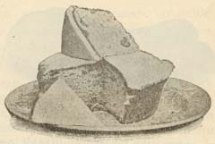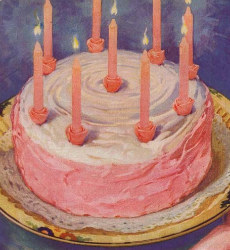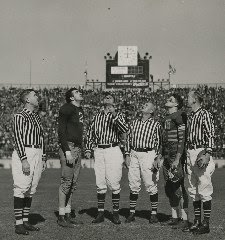Our celebration of National Dessert Month has been surprisingly chocolate-free, so we’re aiming to correct that today with recipes from Chocolate and Cocoa Recipes, published around 1922. Instead of boring candy bars, we at The Devil’s Tale want our plastic pumpkins filled with Devil’s Food cake!
Devil’s Food
2 cups sugar
3/4 cup butter
4 ounces Baker’s Premium No. 1 Chocolate
4 eggs (3 may be used)
2 1/4 cups flour
4 1/2 teaspoons baking powder
1/4 teaspoon salt
1 1/2 teaspoons cinnamon
1/4 teaspoon clove
1 1/4 cups milk
Cream butter and add sugar gradually, while beating to a cream; add chocolate, melted, and beaten yolks and mix thoroughly. Sift together flour, salt, cinnamon, clove and baking powder and add to butter mixture, alternately with the milk. At the last, fold in the stiffly beaten egg whites and bake in a deep pan and ice when cold.
And, just because you can never have too many chocolate recipes (and because there were no pictures of the Devil’s Food cake):
Chocolate Jelly
1 pint boiling water
Pinch salt
1 square Baker’s Premium No. 1 Chocolate
2 tablespoons gelatine
1/3 cup sugar
1 teaspoon vanilla
Put the water, salt and chocolate in a saucepan. Cook, stirring until the chocolate melts, then let it boil for three or five minutes. Soften the gelatine in a little cold water and pour the boiling mixture over it. Stir until disolved, then add sugar and vanilla. Pour into a mould and set aside to harden, serve with cream and powdered sugar or sweetened whipped cream.















